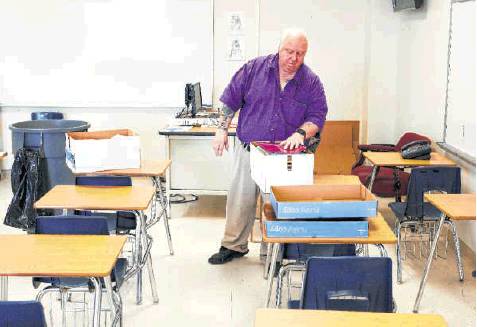Fewer births than deaths among Anglos in most of U.S.
They could lose majority status sooner than expected
By Sabrina Tavernise NEW YORK TIMES
WASHINGTON — Deaths now outnumber births among Anglo people in more than half the states, demographers have found, signaling what could be a faster-than-expected transition to a future in which Anglos are no longer a majority of the U.S.
The Census Bureau has projected that whites could drop below 50 percent of the population around 2045, a relatively slow-moving change that has been years in the making. But a report this week found that whites are dying faster than they are being born now in 26 states, up from 17 just two years earlier, and demographers say that shift might come even sooner.
“It’s happening a lot faster than we thought,” said Rogelio Sáenz, a demographer at the University of Texas at San Antonio and a co-author of the report. It examines the period from 1999 to 2016 using data from the National Center for Health Statistics, the federal agency that tracks births and deaths. He said he was so surprised at the finding that at first he thought it was a mistake.
The pattern first started two decades ago in a handful of states with aging white populations such as Pennsylvania and West Virginia. But fertility rates dropped drastically after the Great Recession and mortality rates for whites who are not of Hispanic origin have been rising. That has put demographic change on a faster track. The list of states where Anglo deaths outnumber births now includes North Carolina and Ohio.
The change has implications for identity and for the country’s political and economic life, transforming a mostly Anglo baby boomer society into a multiethnic and racial patchwork. A majority of the youngest Americans already are non-Anglo and look less like older generations than at any point in modern U.S. history. In California, 52 percent of all children are living in homes with at least one immigrant parent, Sáenz said.
What does it mean for the political map? Some experts say that rapid demographic change became a potent issue in the 2016 presidential race — and helped drive Anglo voters to support Donald Trump.
Of the 26 states where deaths now exceed births for Anglos, 13 voted for Trump and 13 voted for Hillary Clinton. Four are states that flipped from President Barack Obama in 2012 to Trump in 2016: Ohio, Michigan, Pennsylvania and Florida. But it isn’t clear how demographic change will affect politics in the future.
“People say demographics is destiny and there’ll be more people of color — all that is true,” said Jennifer Richeson, a social psychologist at Yale University. “But they also say the U.S. is going to become more progressive. and we don’t know that. We should not assume that white moderates and liberals will maintain current political allegiances, nor should we expect that the so-called nonwhite group is going to work in any kind of coalition.”
Florida was the first state where Anglo deaths outstripped births around 1993, largely because it was drawing a lot of retirees. But its population has been one of the fastest growing in the nation. Retirees have kept coming, replenishing the white population, and its large Hispanic population has helped lift the state overall. The median age for Hispanics in the United States is 29, prime for child bearing, compared with 43 for Anglos.
Deaths began to exceed births for Anglos countrywide in 2016, according to the report. But in many states, as in Florida, Anglos moving in made up for the losses. But, in 17 states, including California, Michigan, New Jersey and Ohio, those migrants weren’t enough and the Anglo populations declined between 2015 and 2016, said Kenneth Johnson, a demographer at the University of New Hampshire and the report’s other author. Five of those states registered drops in their total populations that year: Vermont, West Virginia, Pennsylvania, Mississippi and Connecticut.
Despite demographic change, Anglos — and in particular less educated Anglos — still will make up the bulk of eligible voters in the country for a while. Anglos without a bachelor’s degree will make up 44 percent of eligible voters in 2020, said Ruy Teixeira, a political scientist who did a study of demography and politics this spring. College-educated Anglos will be 23 percent. Teixeira said Republicans could continue to win presidential elections and lose the popular vote through 2036 if they did even better among Anglos who had not graduated from college, while other voting patterns held steady.
That is giving politicians incentives to emphasize immigration and race, where there are the biggest differences in views by education. A class divide has been growing among Anglos. In 1988, there was no difference between Anglos with a college degree and those without, Teixeira said. Both voted for George H.W. Bush over Mike Dukakis by a 20-point margin. By 2016, Clinton lost noncollege Anglos by 31 points, double Obama’s 2012 loss, while carrying college-educated Anglos by 7 points.

